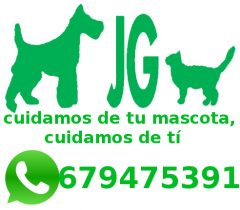This family of exotic birds includes, naturally the True Parrot, but also within this group we have parakeets, macaws, lovebirds, etc.
These kinds of birds are becoming increasingly popular as household pets, to some extend taking preference over cats and dogs. Much of the
popularity for birds can be attributed to the low maintenance and lesser attention required from owners, however there are minimum requirements owners of these pets should know. The best way to care for any parrot is to mimic their natural habitat as much as possible. 90% of diseases are due to poor care by their owners, especially in terms of food and psychological conditions to which caged birds are subjected to.
Purchase
When purchasing a parrot it is important to obtain a detailed invoice from an accredited breeder/importer. This invoice needs to quote the ‘CITES’ (Convention of International Trade of Endangered Species) number of the bird and the documentation should be retained for the life of the bird. The ‘CITES’ number is a unique code for each individual bird and is proof the bird has been legally obtained in accordance with international law which governs this protected species. Any bird that does not have a ‘CITES’ identification is illegal and may be seized by the authorities at any time. Although the bird should be fitted with an identification ring, it is highly recommended that a microchip is implanted for added security.
Sexing
Is it male or female? Visual examination tells us little about the sex of a parrot. Two methods are available for determining the sex, firstly a DNA test can be performed, alternatively an endoscope can be employed to show the internal genitalia. An endoscopic examination will also indicate the maturity of the bird. Sexual maturity is usually reached at 3-4 years.
Lifespan
Typically large parrots live for many decades. Birds receiving a good diet and care can reach 40-50 years of age or more. Smaller parrots such as budgies, lovebirds, etc, can reach 20 years.
Character
Parrots are often ‘one owner pets’ which can be seen in its acceptance, or not, of holding and touching. If you are not paying enough attention they may enter a phase of boredom and depression that can accelerate the emergence of diseases and behavioural problems, including pecking or selfmutilation. Sometimes a parrot develops such a strong bond with an owner that an absolute dependency is established. In such cases the absence or lack of attention from an owner can prevent a bird from eating or drinking and may result in days of self-starvation, feather pulling and continuous vocalization. Parrots are a sociable species and if an owner cannot give adequate time or attention a partner bird may be a good alternative. Do they talk? In general, all parrots have the ability to imitate human (and other) sounds. It all depends on the bird’s location and environment. A parrot can imitate a bark or a meow if living with a dog or cat. Teaching a parrot to talk requires patience, but it is not impossible.
In a domestic habitat
The cage should be large enough so that the bird can fully extend its wings without restriction. Do not place the cage where there is too much sun or drafts. Avoid heating and air conditioning. Never place it in the kitchen or where toxic fumes are emitted, they are quite sensitive to tobacco smoke. Furnish the cage with branches or leaves so as to provide some replication of a natural environment.
It is advisable to allow the bird out of the cage several times a day, again this is more natural than being in a cage all day and avoids behavioural problems such as depression or pecking. Do not allow a bird to chew or pick metallic objects or ornaments which might
contain lead, zinc or other heavy metals which are a common cause of poisoning. It’s highly beneficial for a bird to ‘take the sun’ a few minutes a day, but always direct sunlight in measured quantity… not through glass! Provide perches or poles of sufficient thickness and size in relation to the feet, do not use thin perches and poles. Commercial perches are available which are made of rough material which helps
prevent calluses of the feet. Never use chains to tie the legs, these are the cause of frequent fractures. Harnesses (as for cats and dogs) are available to assist in handling, but harnesses should not be left on permanently or whilst the bird is unattended. A thick ‘limestone’, secured
in the cage is a must and will help maintain a healthy beak and prevent overgrowth. The beak does contain nerve endings which extend practically to the tip of the beak, therefore a beak should only be trimmed by someone experienced in doing so, otherwise the bird could be subjected to great pain. As well as a tool for picking and dealing with its food, the beak (and tongue) is used by a parrot as a method of greeting. Equip your bird’s cage with ‘safe’ toys and gadgets: ropes, bells, mirrors etc, to prevent boredom. They need things they can ‘chop and destroy’ which they do naturally (eg hardwood and rope). Reposition toys once a month, this prevents the stereotypical repetitive movements often exhibited by caged birds.
This article was published in Costa Blanca News.



